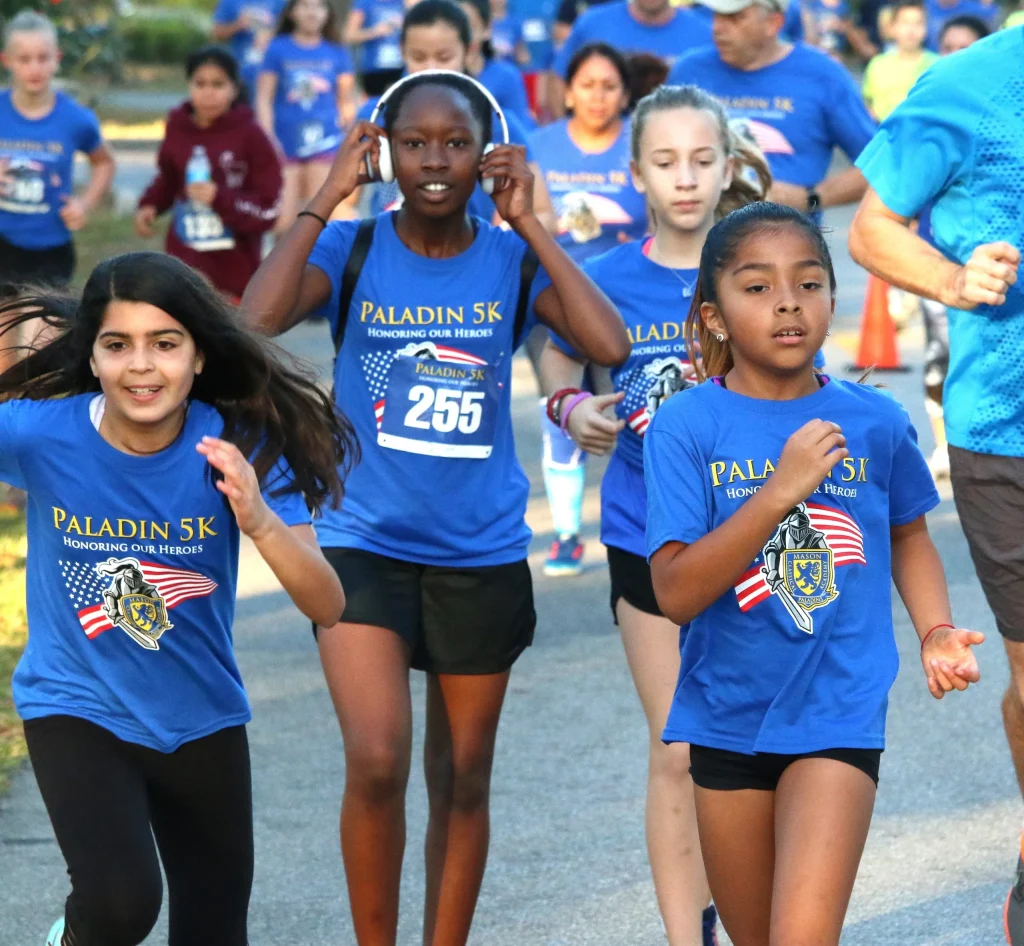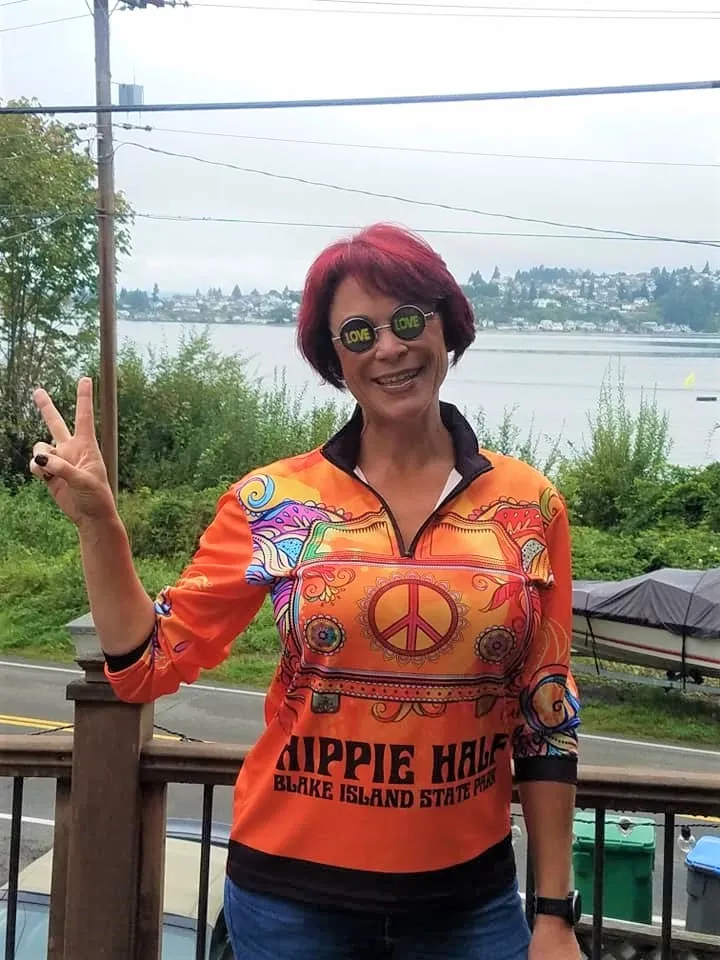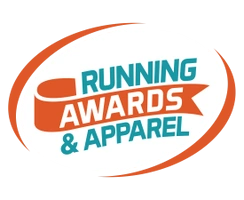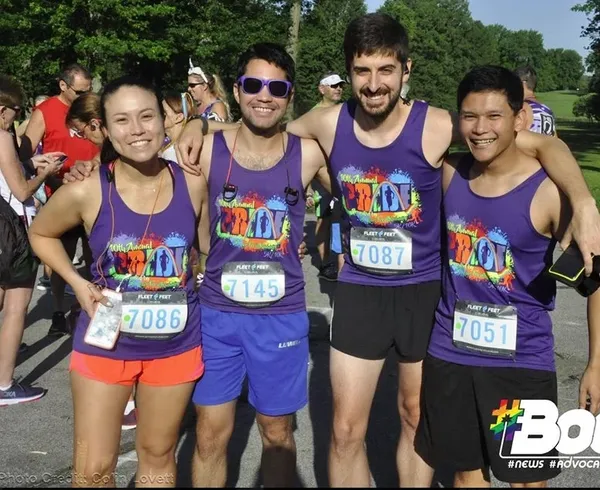Do you have questions about race shirt ordering?
Are you unsure of how many participants you’ll have at the end of sign up, or how many will be women or men, and what number of each size you will need? You are not alone. We hear from race directors every day, who need help determining the best approach in ordering their race shirts. Not only do they need to know the numbers, but they also want shirt quality and comprehensive information on printing options.
What type of running event are you planning?
There are many types of runners and many types of running events to be considered. There are family-fun short distance and 5K races for beginners, recreational runners as well as serious runners. There are community 10K races for those athletes who are a bit more experienced. Consider Half-Marathon events, which in many cases are used as training runs for the serious Marathoner vying to best her Personal Record. And, we can’t forget the trail runners and races, which boast a more “natural” and earthy type of character in their apparel and swag.
McQuire’s St. Patrick’s Day Run with full color sublimated technical race shirts.
Each of these runner types and events may need different types of running shirts for different reasons. With all of that in mind, it’s not always simple to choose what is right for you and your event. Take heart however, as there are key factors in choosing the overall best shirt for your event.
Key shirt ordering factors include:
- What is the right kind of shirt material for my event type?
- Should I go short or long sleeve?
- What type of T-shirt customization is best for me?
- How many shirts should I order, and what sizes?
- Do I need to order both men’s and women’s shirts?
- how soon before my race should I put my order in?
Cotton or technical – which running shirt is best?
Choosing shirt material should be the first thing you do when looking to buy finisher T-shirts. Here you have three options: cotton, technical fabrics, and blends of the two.
Community fun run with a mix of seasoned runners and youth runners in full color sublimated technical shirts.
Community fun run with a mix of seasoned runners and youth runners in full color sublimated technical shirts.
Technical running shirts are available in 100% polyester and are typically offered in many color options. Seasoned runners seem to prefer technical shirts over other types for their light weight, breathable quality.
Most tech shirts are moisture-wicking, which can help runners stay cool during a race and help with overall performance, and often come with anti-microbial properties to help maintain freshness after a runner’s sweaty effort.
Cotton/poly blends have also become very popular as they offer the look and feel of cotton while providing many of the same benefits of 100% polyester shirts. They can be worn during racing and training, but also work well as all-round T-shirts that people can wear in everyday life.
The main advantage cotton shirts provide to race directors is that they are budget friendly. Many smaller running events (up to 150 runners) and inaugural event race directors choose cotton finisher shirts their first year as they are still gauging turnout and learning about the runners they attract to their event.
In Summary – Race Shirt Material Choice
- Technical T-shirts are the better choice for the more competitive runners. Best for: Half-Marathons, Marathons, Ultras and Trail Races.
- Choose cotton for events attracting recreational runners and to reduce costs. Best for: Fun Runs, 5Ks and first-time events.
- For the best of both worlds and something that can also be worn for outdoor training, consider cotton/polyester blends.
What about sleeve length in your race shirt?
Short sleeve shirts are by far the most popular with all running events, with some warmer weather races going to singlets or tank tops. But, if a race is held during the winter months in the more northerly regions, or if a trail run will have runners brushing up against foliage and exposed to high-altitude sun, then long sleeves may be your best bet for your runners’ wellbeing and safety.
In Summary About Race Shirt Sleeve Considerations:
- Consider the weather
- What is the course type?
- What would make your runners the most comfortable?
Note: If going long-sleeve is something you’re thinking about, and you are willing to stretch a bit on price, you can also consider quarter zip pullovers or fleeces as an upgrade to your regular finisher shirt. That is also a very popular choice that is much appreciated by runners.
Screen print or full-dye sublimation – what does this mean and how will each look?
When deciding between screen print and dye sublimation – the most common printing methods used in the racing industry – cost, quality, and complexity of design are all important to consider. So, let’s look at each of those printing methods in turn.

Paladin 5K Race participants wearing short sleeve cotton blend screen print race shirts.
Screen Print for your finisher shirts: Screen printing is the most widely chosen option for branding finisher shirts. The way it works is through the application of ink onto apparel by use of a stencil that is burned onto a framed screen. The “stencil” or screen is then used to transfer the ink onto a shirt, one shirt at a time, and one color and screen at a time. The set-up process for screen printing is therefore tedious and requires skilled printing press operators to provide high-quality prints.
There is usually a limit to the number of colors, as each additional color can add to the cost, due to the labor involved. Typically, for finisher shirts, the front of the shirt showcases the race brand and theme in a variety of colors, while the back of the shirt is printed with sponsor names, usually in one color only.
Many shirt types and materials lend themselves well to screen print decoration, and screen printing is the most cost-effective choice for large race orders.
Is there an ideal number of colors to include in a screen print design?
“I would suggest any number between one and four, if screen printing,” says race shirt design expert, Del Backs, founder, and former president of Racetrackers Enterprise. “I also suggest considering a smaller left-chest versus a full-chest print. The shirts used for running events are typically light weight cotton or polyester. When you print a heavy color or full front print, this can make the shirt less comfortable for runners to use in training or events.”
Full-color dye sublimation explained: Sublimation is a process by which dyes are printed onto a transfer medium, in mirror image, using a specially prepared inkjet printer. Those dyes are then transferred from the medium to the shirt material, where they penetrate the fabric under the heat and pressure of a commercial heat press.

Hippie-Half Race Director wearing full-color sublimated quarter zip.
Unlike the screen print technique, there is no need for separate screens for different colors. This type of shirt decoration will outlast any screen print, as the graphics are fused into the material itself. Any design can be printed seam to seam, all over a garment, hence the term “full color”.
Sublimation can only be applied to 100% polyester shirts, and they typically need to be white or very light-colored to start. The good news is that because of the way ink is fixed onto the fabric with dye sublimation, the resulting shirts become even softer than the original.
Our expert Del Backs says that, over the last 10 years, more runners are choosing sublimation than ever before,”Pricing on sublimated shirts has come down over the years. Sublimation provides an event unlimited possibility on design and colors, due to being able to cover the entire shirt. And this method makes the shirt even softer after sublimation.”
In Summary About Design Choice in Race Shirts
- Sublimation can provide a unique branding statement for your event. If you’re looking for the most vibrant and durable full-color graphics, that’s the way to go.
- Screen print shirts are ideal for meeting budgets and for events that don’t need a lot of colors in their design. It is a great option for both small and very large order volumes.
- Set yourself up for successful ordering by asking participants to specify shirt size during online registration.
- Registration should also include a clearly posted deadline that runners must meet to be guaranteed a shirt.
- The shirt ordering deadline you set should be around 3-weeks before your event date. For covering stragglers, you can add on 15-25% to your final order amount.
- To allow time for artwork adjustments and last-minute sponsor additions, it is recommended that you start your race shirt order 4 to 6 weeks prior to your event date.
- Women make up a large percentage of runners who sign up for events, and an even larger percentage of those who purchase shirts and other swag from an event.
- Ensuring women runners are presented with well-fitted clothing will make them feel more valued as participants.
- Valued women runners are going to be more inclined to return to an event and tell others about it if the event offers gender-specific swag.
- Depending on the type of running event, shirt sizing can vary greatly.
- For example, events that attract less experience runners may skew toward larger sizes,
- Events that primarily attract seasoned runners, or are geared toward women’s themes, may skew toward smaller sizes.
Our most frequently asked questions (and our answers) about race shirt ordering. How soon before a race should I order my finisher T-shirts?
Should I order both men’s and women’s running shirts?
What if I haven’t had the chance to ask participants for their shirt sizes?
It is strongly recommended that you gather size information from event participants whenever possible. The best time to do this is during online signup.
However, if you are not able to collect this information, it is best practice to order your shirts in a unisex style to help provide universal fit.
For more information on race shirts, or if you have more questions about ordering shirts for your running event, don’t hesitate to contact our Race Consultants here, or call us at 877-818-4929. We’d love to help your event be the best race ever!

